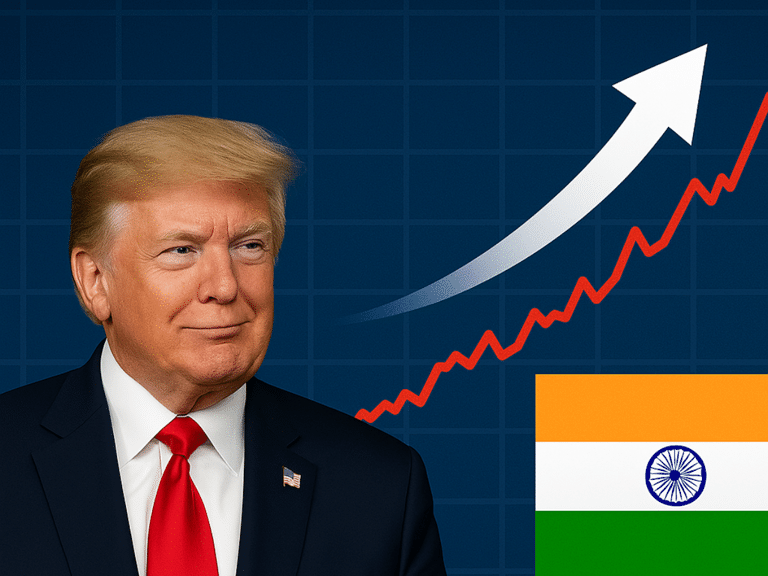Donald Trump Unveils 25% Tariffs: Implications for India-US Trade Deal Negotiations

US President Donald Trump has announced a new 25% tariff on Indian goods, raising significant concerns about the future of trade negotiations between the two nations. This tariff, which is lower than the previous rate of 26%, comes alongside warnings of additional penalties related to India’s ongoing purchases of Russian crude oil and military equipment. As both countries navigate this complex situation, the question remains: will these tariffs serve as a pressure tactic to finalize a favorable trade deal for the United States?
Trade Talks in Uncertainty
In recent weeks, President Trump had indicated that the United States and India were close to finalizing a trade agreement. He suggested that a deal similar to the one with Indonesia could be on the horizon, which would enhance market access for both nations. Commerce Minister Piyush Goyal echoed this sentiment, stating that negotiations were progressing rapidly. However, Trump’s latest tariff announcement has cast doubt on the likelihood of reaching a deal by the August 1 deadline for reciprocal tariffs. The shift in tone from the U.S. administration raises questions about the future of these discussions and whether they are now in a state of limbo.
The U.S. has long expressed frustration over India’s high tariffs and non-monetary trade barriers. Trump’s recent statements highlight his dissatisfaction with India’s reluctance to open its agriculture and dairy sectors, as well as its continued reliance on Russian energy and defense products. The U.S. aims to gain access to these markets while also promoting its own oil and arms sales to India. As the situation unfolds, the potential for a trade deal appears increasingly uncertain.
Pressure Tactics from the Trump Administration
The imposition of tariffs seems to be a strategic move by the Trump administration to compel India to agree to terms that favor U.S. interests. Economic adviser Kevin Hassett noted that the President’s frustration with the pace of negotiations has led to this decision. The administration is expected to provide further details regarding the additional sanctions related to India’s trade practices. Trump’s previous assertions about India’s high tariffs and the need for a more balanced trade relationship underscore the U.S. administration’s position.
Despite the tariffs, Trump has maintained that Prime Minister Modi is a friend, yet he emphasized that the trade imbalance must be addressed. The U.S. President’s comments suggest that while India may be willing to negotiate, significant hurdles remain. The ongoing discussions will likely focus on how to reduce tariffs and open markets while addressing U.S. concerns about India’s trade practices.
India’s Stance on Trade Negotiations
India has consistently maintained its position that its agriculture and dairy sectors will not be opened to trade negotiations. The Ministry of Commerce and Industry has reiterated that protecting the interests of farmers and small businesses is paramount. In response to the new tariffs, the ministry emphasized that national interests will guide India’s approach to trade agreements. The government has made it clear that deadlines will not dictate the terms of any trade deal, as they prioritize a fair and balanced agreement.
Piyush Goyal has previously stated that India does not operate under pressure from deadlines when it comes to trade negotiations. This steadfast approach reflects India’s commitment to its economic priorities, even in the face of external pressures. The government is prepared to take necessary steps to safeguard its interests while continuing to engage in dialogue with the U.S.
Looking Ahead: Future Trade Talks
Despite the challenges posed by the recent tariff announcement, India appears willing to continue negotiations with the United States. The Ministry of Commerce has acknowledged Trump’s statements and is currently assessing their implications. Both countries have been engaged in discussions aimed at reaching a mutually beneficial trade agreement over the past few months.
U.S. officials are scheduled to visit India for the sixth round of trade talks starting August 25. During Prime Minister Modi’s visit to the U.S. earlier this year, both nations expressed optimism about finalizing a trade deal by fall. While the new tariffs may complicate the negotiation process, there remains hope that a common ground can be established to achieve a favorable outcome for both countries in the coming months.
Observer Voice is the one stop site for National, International news, Sports, Editor’s Choice, Art/culture contents, Quotes and much more. We also cover historical contents. Historical contents includes World History, Indian History, and what happened today. The website also covers Entertainment across the India and World.
Follow Us on Twitter, Instagram, Facebook, & LinkedIn

